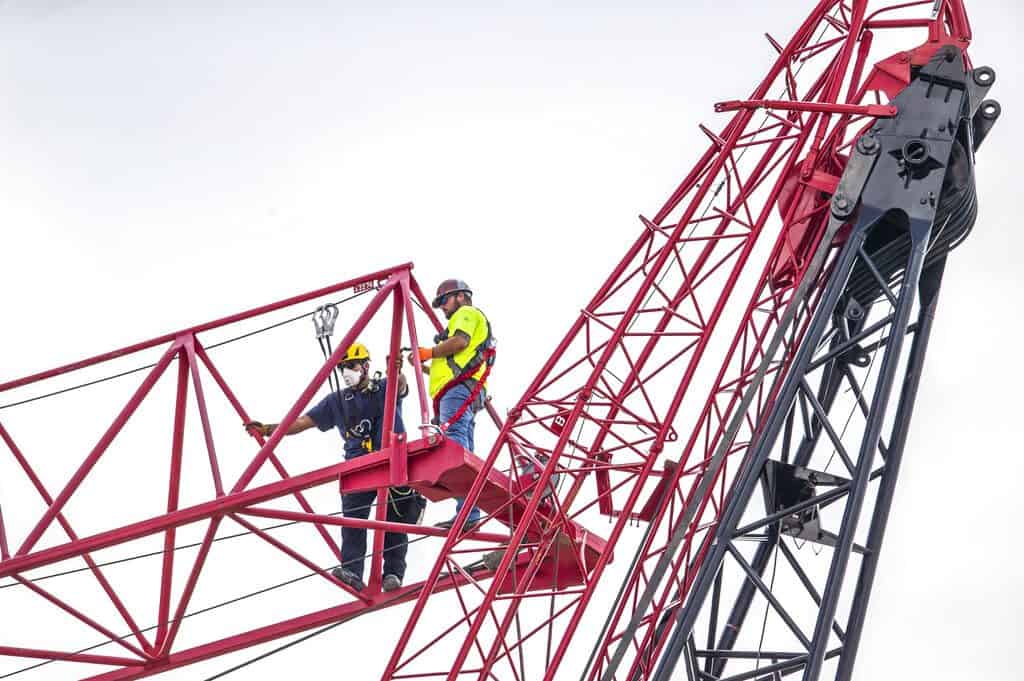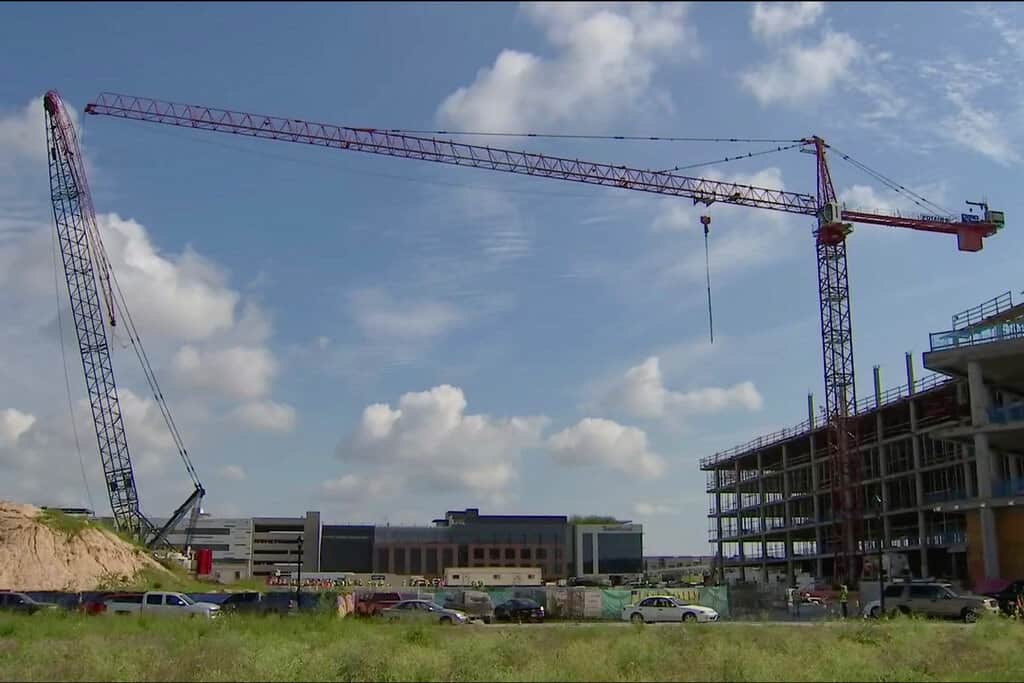A Two-Crane Collision Caused Multiple Injuries: Sorting Out the Incident

An Austin, Texas, construction site was the site of an early morning collision as two cranes became entangled on September 16, 2020. The incident injured 22 people.
At a on-site news conference, Austin Fire Department Battalion Chief Mark Bridges said to the press, “This just happened to be two cranes working, we’re not sure how or why, but they did get entangled,” he said. “Since they are attached at the top, we don’t want the wind to cause further problems.”
He added, “Right now, no one is trapped or injured and we are doing our best to monitor the scene.”
We also learned that all injured persons were employees from the mixed-use development, known as the Mueller complex.
A safety provision was enacted by one of the crane operators who stayed on his crane to apply a “secondary safety measure”
Two hours after the cranes became entangled, one of the crane operators was still on his crane applying his foot to the brake in case the mechanical crane lock—which was still functioning—stopped working, as Austin Fire Department Battalion Chief Mark Bridges summed up to the press. Bridges added that the active crane operator was not injured and did not need rescuing.
“If we thought he was in any kind of danger, we would attempt some kind of rescue,” Bridges said. “He’s not in any danger. Right now he’s providing secondary safety.”
Officials urged people to avoid the area as construction company crane specialists arrived on the scene to inspect the cranes and figure out how to separate the cranes. OSHA and crane specialists were apprised of the accident and made their way to the site to begin an investigation.
An Austin media outlet published an update mid-morning of the accident, “At an 11 a.m. press conference, EMS and fire officials said the cranes were stabilized at their bases but that wires from each crane are tangled together. Officials said they are still investigating whether the tangle caused the collision or whether the cranes hit and caused the wires to tangle.
“A drone unit from the Austin Fire Department was deployed to inspect the tangle and help officials determine how best to separate them.”
Onlookers were able to provide some details, such as the injuries occurred as a result of people running to get out of the way.

The USA Tribune reported that “Cadence McShane Construction recently began construction on the Alpha Building, a six-story office building and garage in the mixed-use neighborhood. The 240-square-foot building will be the first of three development sites to provide capacity for four office buildings totaling approximately 800,000 square feet.”
“We are in close contact with our subcontractors, local authorities, and our on-site team to better understand what transpired,” Craig Morris, senior vice president for Cadence McShane, said in a statement. “More importantly, we are working with the crane subcontractor and the fire department to ensure the damaged crane is safely dismantled. Since this is an ongoing investigation, we cannot provide additional details at this time.”
According to the U.S. Occupational Safety and Health Administration, related history of the construction company was made available. A Cadence McShane Construction employee was killed in Austin while moving a concrete slab in August 2017. Also, in February 2020, a worker at a Cadence McShane construction site in Sherman, Texas, died after falling at the new Sherman High School in North Texas, according to the Herald Democrat.
Crane operations can be dangerous work. The U.S. Bureau of Labor Statistics counted 297 crane-related deaths from 2011 to 2017, averaging 42 deaths per year. The state with the most crane-related deaths was Texas.
Equipment reliability professionals need great troubleshooting and root cause analysis skills
What are the biggest problems finding the root causes of equipment failures and equipment reliability issues? First, if you don’t do good troubleshooting to start with, you will lose the evidence you need to identify the failure’s root causes. That’s why we worked with equipment reliability expert Heinz Bloch to develop the Equifactor® Troubleshooting Tables. They can help your equipment experts or mechanics do a great job troubleshooting equipment problems and collecting the information you need for root cause analysis. To that regard, the tables can be customized to your unique problem. Learn more about Equifactor® here and take a look at how the Equifactor® courses can help you and your team.
Second, equipment reliability experts know a lot about the equipment, but they don’t usually know about human factors. The TapRooT® Root Cause Analysis System will help guide equipment reliability experts to the root causes of equipment failures whether they are caused by mechanical failures or human errors.
Founded in 1988, the TapRooT® Root Cause Analysis System solves hurdles every investigator faces
TapRooT® Root Cause Analysis Training System takes an investigator beyond his or her knowledge to think outside the box. Backed with extensive research in human performance, incident investigation, and root cause analysis, TapRooT® is a global leader in improved investigation effectiveness and productivity, stopping finger-pointing and blame, improving equipment reliability, and fixing operating problems.
NOTE: The above picture was taken prior to the pandemic and does not reflect COVID-19 practices that are part of current TapRooT® courses.
TapRooT® Root Cause Analysis Training courses are taught all over the world
System Improvements, the creator of the TapRooT® System, has a team of investigators and instructors with years of extensive training ready to offer assistance worldwide.
If you are interested in learning how to stop repeat incidents, find a 2-Day or 5-Day course; or view the complete selection of TapRooT® courses. We are available to train you and your staff on-site at your workplace; Contact us to discuss your needs. You may also call us at 865.539.2139 to discuss any questions you may have.
Keep in touch to improve your problem-solving skills
We’re continually training, helping you improve your professional root cause analysis skills. Stay current with your TapRooT® Root Cause Analysis skills and training through:
- Following our blog;
- Free newsletters;
- Tuning in to TapRooT® TV Video Sessions or our podcasts;
- Connecting with us on Facebook, Twitter, Instagram, Pinterest, LinkedIn, and YouTube;
- And our annual Global TapRooT® Summit. Registration is now open!



